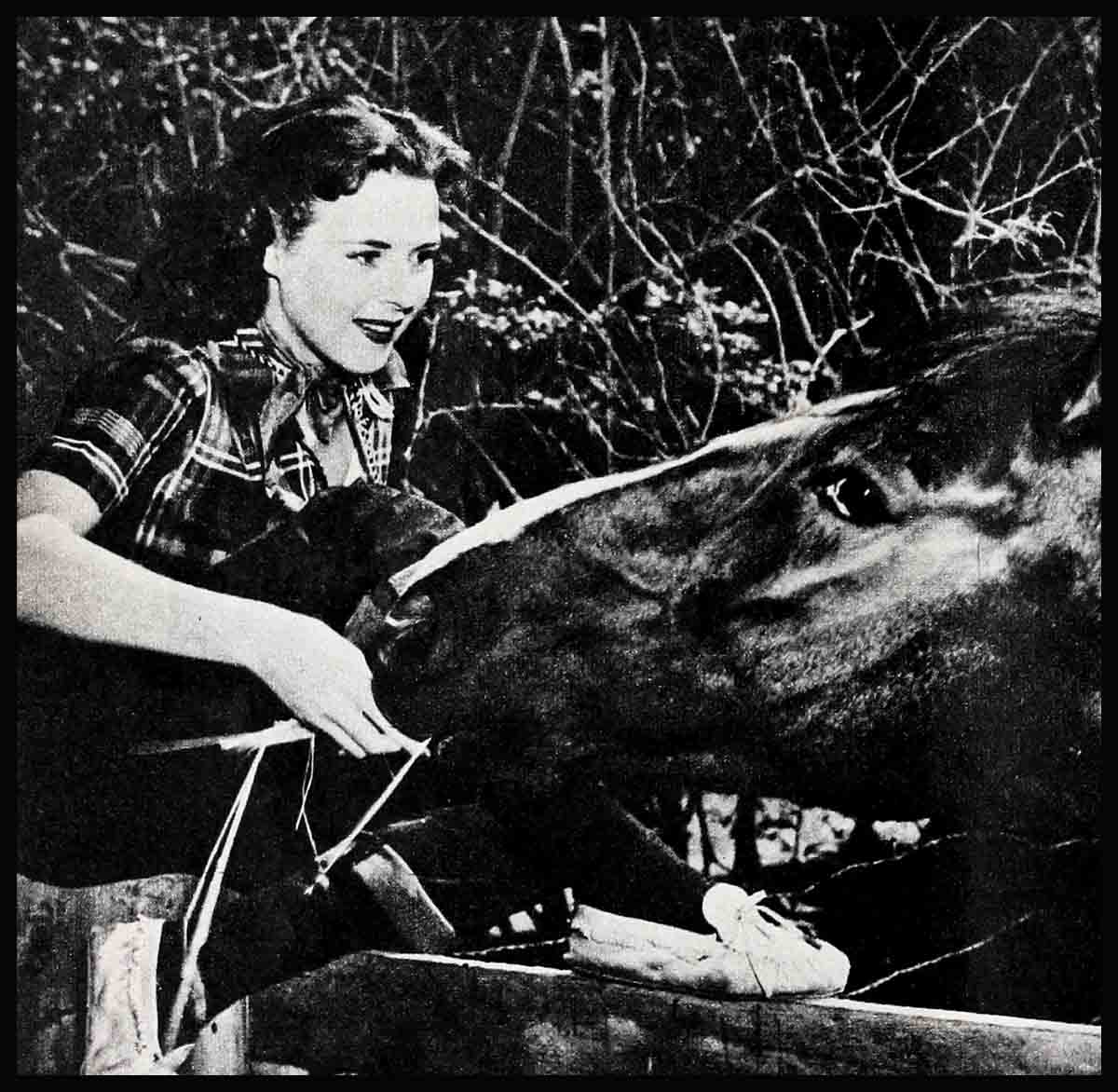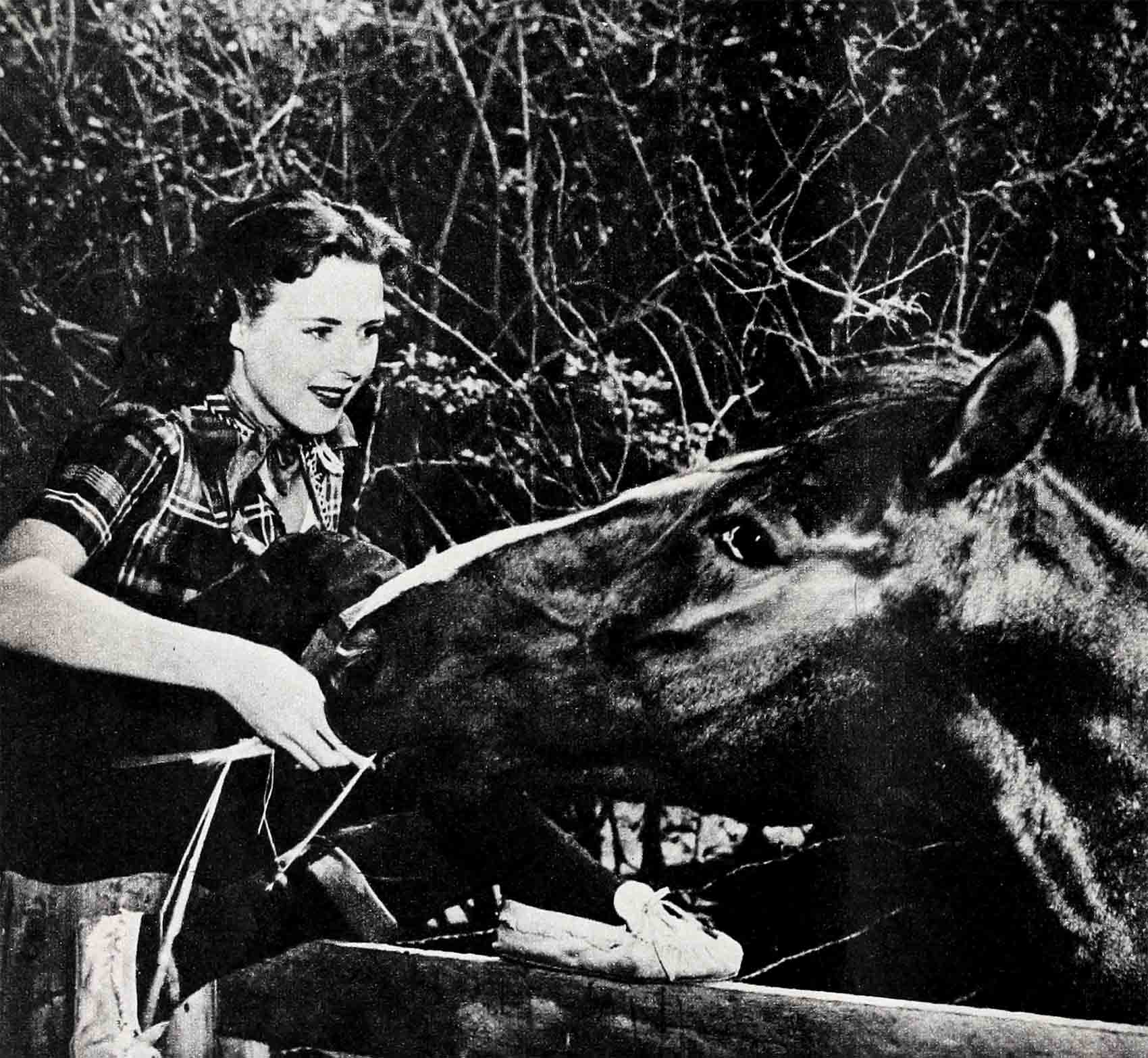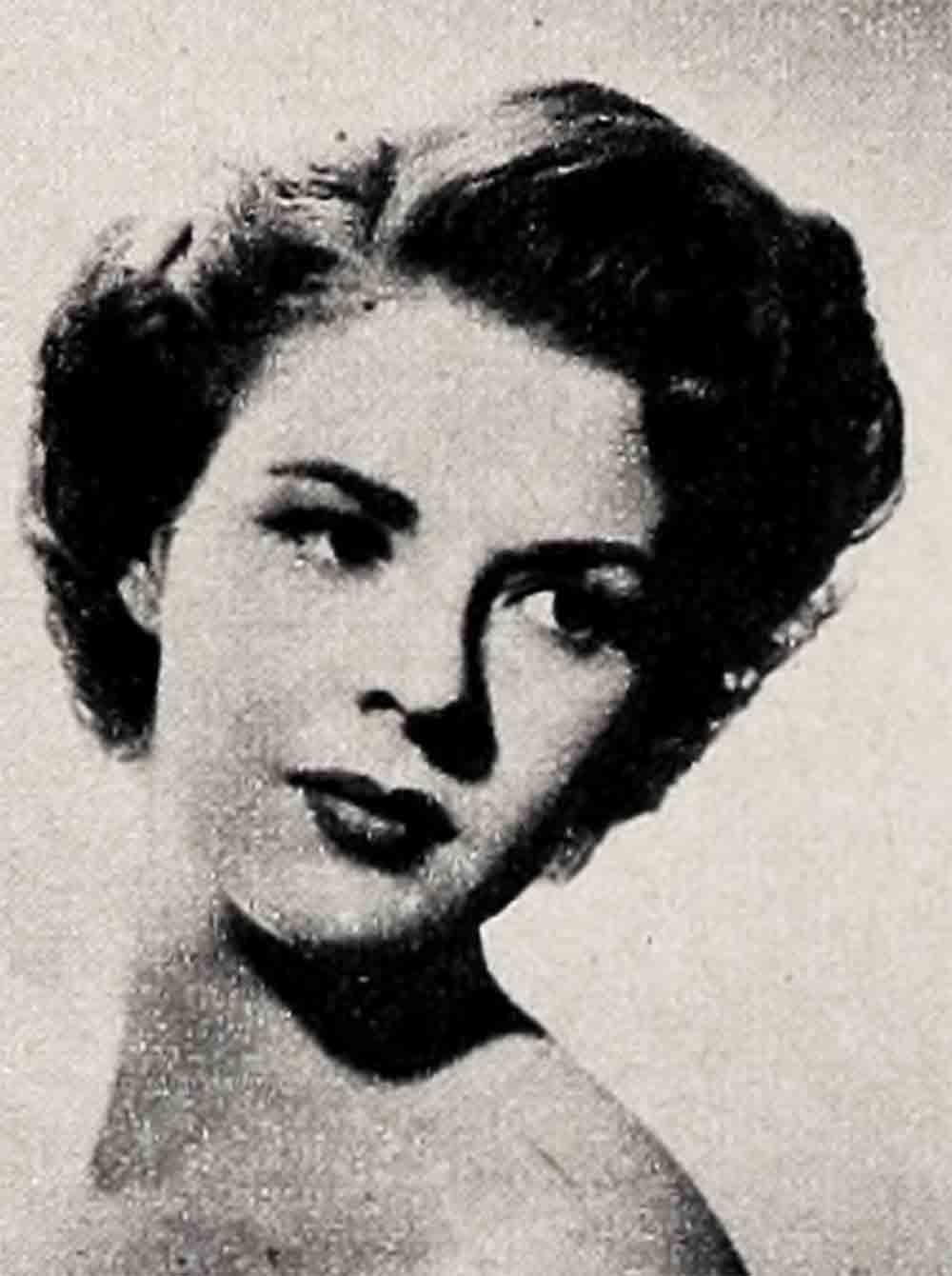
Look Who’s Here—Mala Powers
MALA POWERS has made an amazing comeback—not from voluntary retirement, not from a slump in her career, but from the shadow of death. In the course of her strange illness and miraculous recovery, many distortions and even flat untruths reached print. Mala’s own story, told simply and quietly, as she tells it, is far more inspiring. How, at a time when doctors warned her mother that Mala might die within three days, did Mala herself know that she would live? “I went into a chapel,” she says. “I had a little conversation, and I got an answer.”
As you saw her in “City Beneath the Sea,” the sparkling, dark-haired young actress seemed filled with vitality. Actually, while Mala was making this movie, early last year, only spirit kept her going. She had had a severe case of flu in Tokyo, returning from an entertainment tour in Korea, and she assumed that the Japanese flu bug must be an especially sturdy kind, immune to the new “miracle” drug she was taking. But she wouldn’t give in to the headaches or the attacks of weakness; make-up covered her pallor, and she went on working.
When she reported to Bud Westmore one morning, the make-up man took one shocked look at her dead-white face and promptly called a doctor. Mala didn’t even finish the picture. She was written out of the café-fight scene. In the hospital, she was simply angry and impatient at first. “Give me the transfusions,” she said, “and let me get out of here!” But the tests being made were leading to an unexpected conclusion.
Mala thought her illness was only a minor one. This belief was shattered by a soft-hearted laboratory technician. The girl came up to Mala with tears streaming down her face and told her, “You’re young. The important thing is to stay in the ball game.”

Pictures: “City That Never Sleeps”; “Gambler’s Moon”
Frightened and bewildered, Mala seized the phone and called her mother. “Come right over here and make the doctors tell me what’s wrong!” So she learned the truth: She was violently allergic to the drug she had been taking; it was destroying the marrow of her bones, and her body had lost its capacity to make blood.
On her arrival, the hospital’s chapel had been pointed out to her. Now she went into the chapel, alone. She said, “Dear Christ, tell me whether I’m going to die. If I am, is there something I must do first?”
Mala waited, and she was answered. There was no voice; she just felt, suddenly, the firm assurance that she would live. This faith sustained her through the long months of treatment—shots every six hours, one transfusion after another. She watched the plants in her room, green and growing, heartening symbols of life. Finally, she had a sense of something growing inside her. This was literally true; her blood cells were rebuilding.
Naturally, Mala had human help, too, through the constant, gentle care of the doctors and nurses, through the warm, automatic generosity of show-people. Though her own studio, RKO, had merely loaned her to Universal-International for “City Beneath the Sea,” U-I paid her hospital bills up to the time of diagnosis. Fellow players, crew members, executives —all of them took a personal interest in her welfare. When the word went out that Mala needed blood, everybody she knew wanted to be a donor. And there were offers of financial help.
Eventually, her doctors granted that she would recover. Mala, of course, had known this ever since the conversation in the chapel. (It should be emphasized here that she did not have leukemia. Both Mala and her doctors were infuriated at the columnist who made this erroneous statement. Mala even phoned the columnist, only to be told, “You don’t know what’s really wrong with you.” And the statement was printed again. It was a tragic mistake, because as Mala convalesced she and her doctors were besieged with hopeful letters from leukemia victims, inquiring about “the new cure.”)

At this point, the doctors cautiously warned Mala, “Don’t expect too much. You may be well enough to work in a couple of years—or never.” But Ida Lupino, barely recovered from her own serious illness after the birth of her baby, gave Mala a wonderful lift by bringing her a script to read. “It was just what I needed,” Mala recalls. “Just the thought of getting back to work again!” She started to read other scripts. In all, she had to turn down seven, because the roles were too strenuous, calling for swimming, riding, dancing.
Finally, a part came along that won her doctors’ okay. It was Republic‘s “City That Never Sleeps,” which began shooting in December. Mala had gone into the hospital in April. She hadn’t been on her feet for more than a couple of hours a day since then; she was still getting regular transfusions. When she reported for work she was confronted with a dance scene! But she got through it. “That night,” Mala says, “was the greatest I’ve ever had. ‘I’m not going to be an invalid, I kept thinking. I’d wanted to act since I was eight years old. Now, after such a long time away from it, here I was doing it again.”
On her return to Hollywood from Chicago, where most of the film was made, Mala’s blood count had practically doubled. So other roles could be lined up, including “Gambler’s Moon.” Now owned by RKO, this is the very script Ida Lupino brought to the hospital. Mala’s personal life has returned to normal, too, with no risks to her health involved, since she has always lived quietly. For recreation, she likes mad sessions of Scrabble (a glorified anagram game), simple dinner-and-movie or amusement-park dates with Gig Young or producer Stanley Rubin.
You might think that the year of Mala’s ordeal would be thrust to the back of her mind, like a nightmare to be forgotten. But it isn’t the fear or the suffering that she remembers. She remembers her experience of humanity at its best. She remembers her close, comforting knowledge of a presence beyond humanity. She says softly, “It was a year I’d never trade for anything in the world.”
—BY CORINNE BAILEY
It is a quote. PHOTOPLAY MAGAZINE SEPTEMBER 1953




